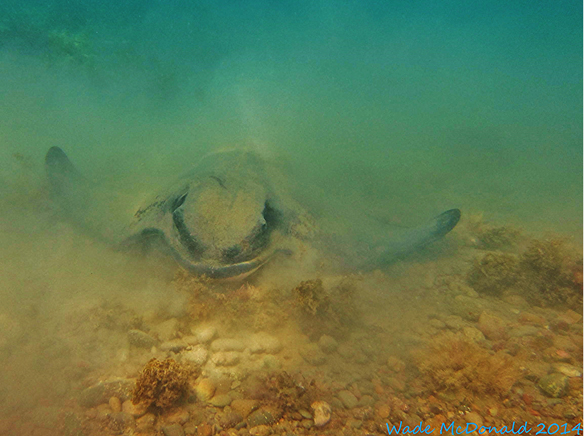Here I am once again on dry land daydreaming about the deep blue sea. Care to join me ? It’s that time of year again and “spring” is in the air, but did you know it’s also in the H20 down below ? Bat rays are bottom dwellers that can be found from the Oregon coast all the way south to the Sea of Cortez as well as the Galápagos Islands.
They are “euryhaline,” which simply put means that they have the ability to adapt to a wide range of salinities such as sandy or muddy sloughs, estuaries, coral reefs, kelp beds,bays and rocky bottomed shorelines.They can live well beyond 20 years and when it comes to longevity the females take the prize. Bat rays can grow to be 6 feet in width and weigh up to 210 lbs. They tend to live a solitary life. However, during reproduction periods they gather in large populations to mate. This takes place during the spring and summer months, typically in the late afternoons.
The males seek out their partners by picking up on the females’ scent.Once paired together, the males will swim directly below the female with their wing movements synchronized in perfect motion. It is not unusual for several males to fight over a single mate while she waits for one to flip her over into the right position.
Before pups are born there is a sheath that is wrapped around their stinger to protect the mother during delivery. This sheath falls off immediately once the birth is complete allowing pups to use their stinger against any would be predators the moment they start their life. Their diet includes crustaceans, mollusks and even small fish. They catch their food by flapping their pectoral fins on the sand essentially exposing their prey, Another method is achieved by digging deep holes in the sand. Did you know that during a bat ray’s life span that they lose their teeth and then grow new ones continuously? No need for cosmetic dentistry for the bat ray! They’re covered, literally, with sand.
Let’s take a look at our official marine forecast for the Island now shall we? This afternoon north west winds 15 to 20 knots with gusts up to 25 knots. Mostly sunny with a temperature high of 62. Always remember to check current weather conditions when planning your activities around the water. Know your limitations and swim near a lifeguard when possible. When In Doubt Don’t Go Out!











